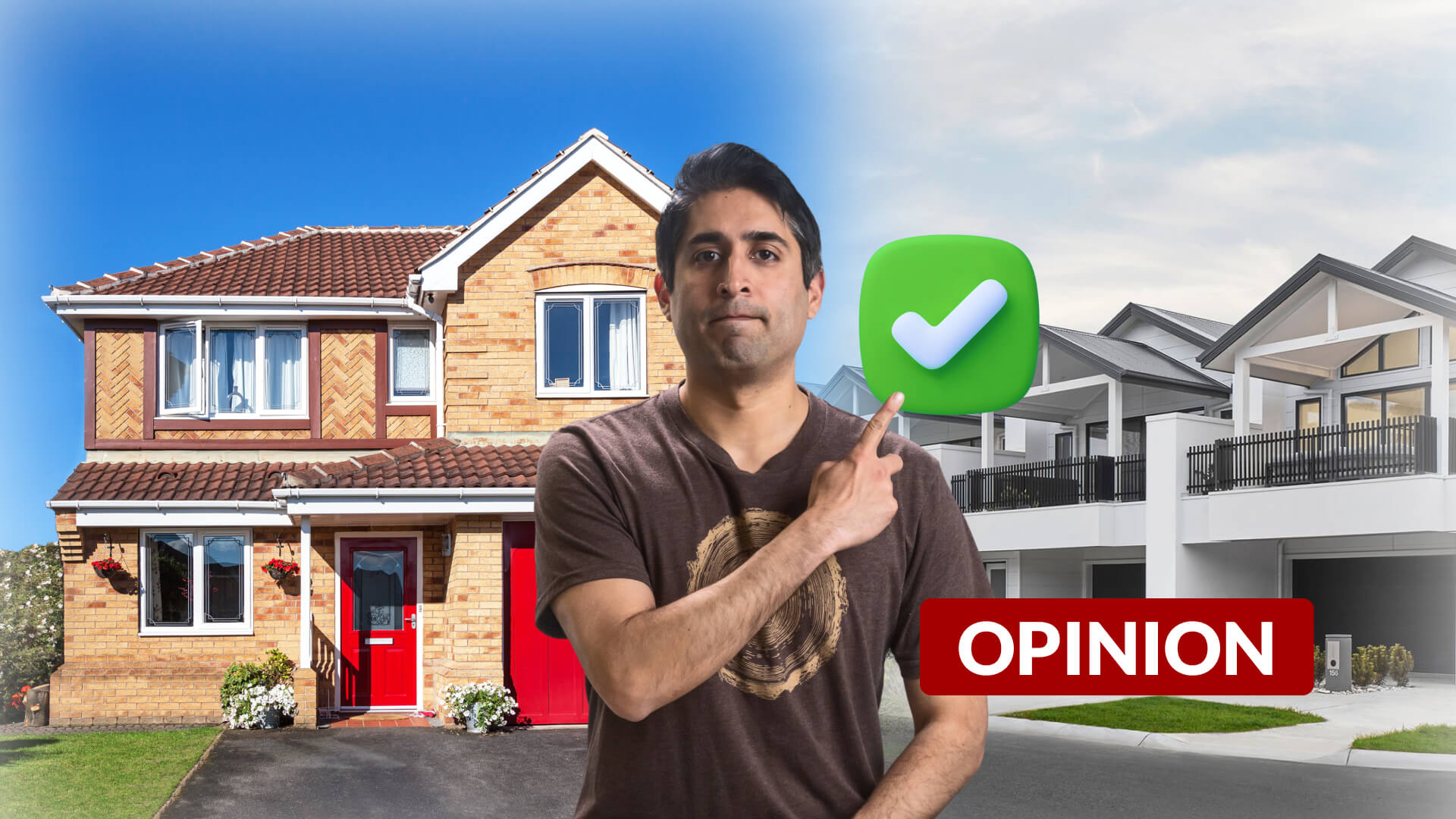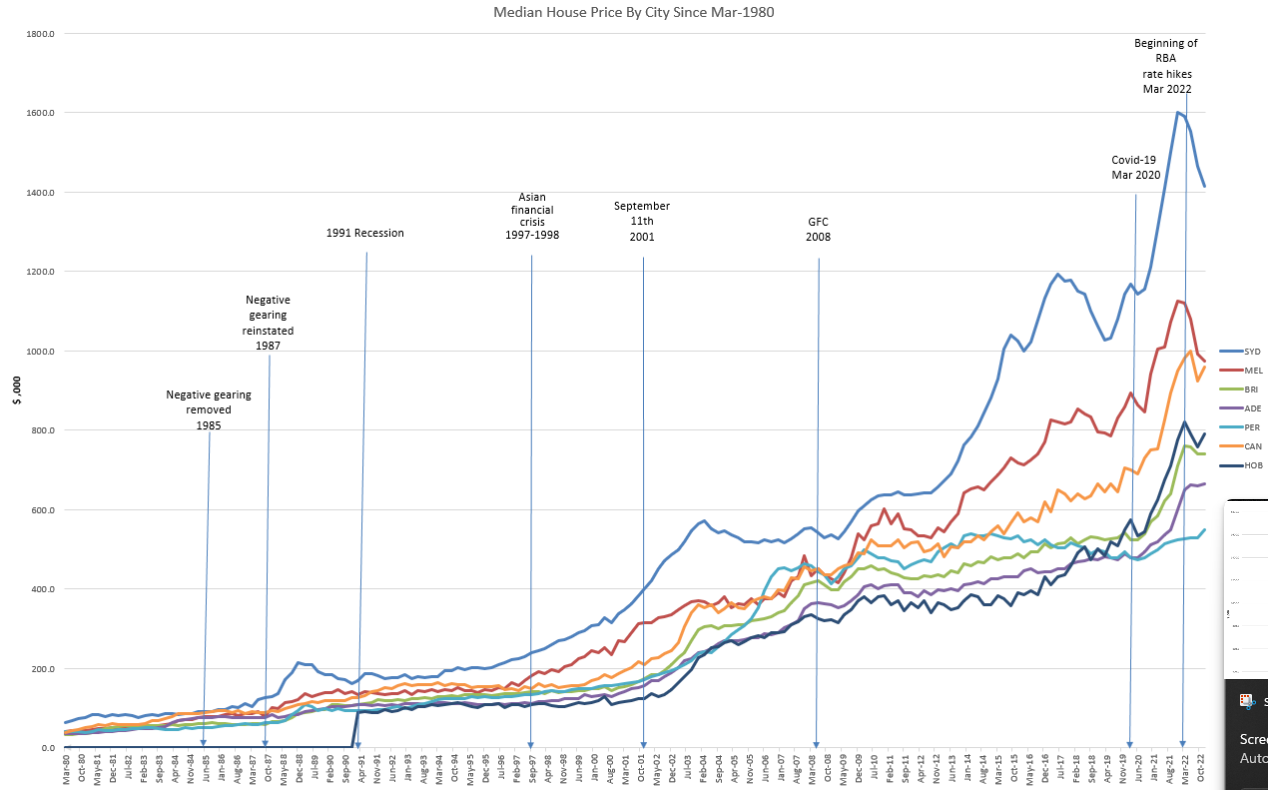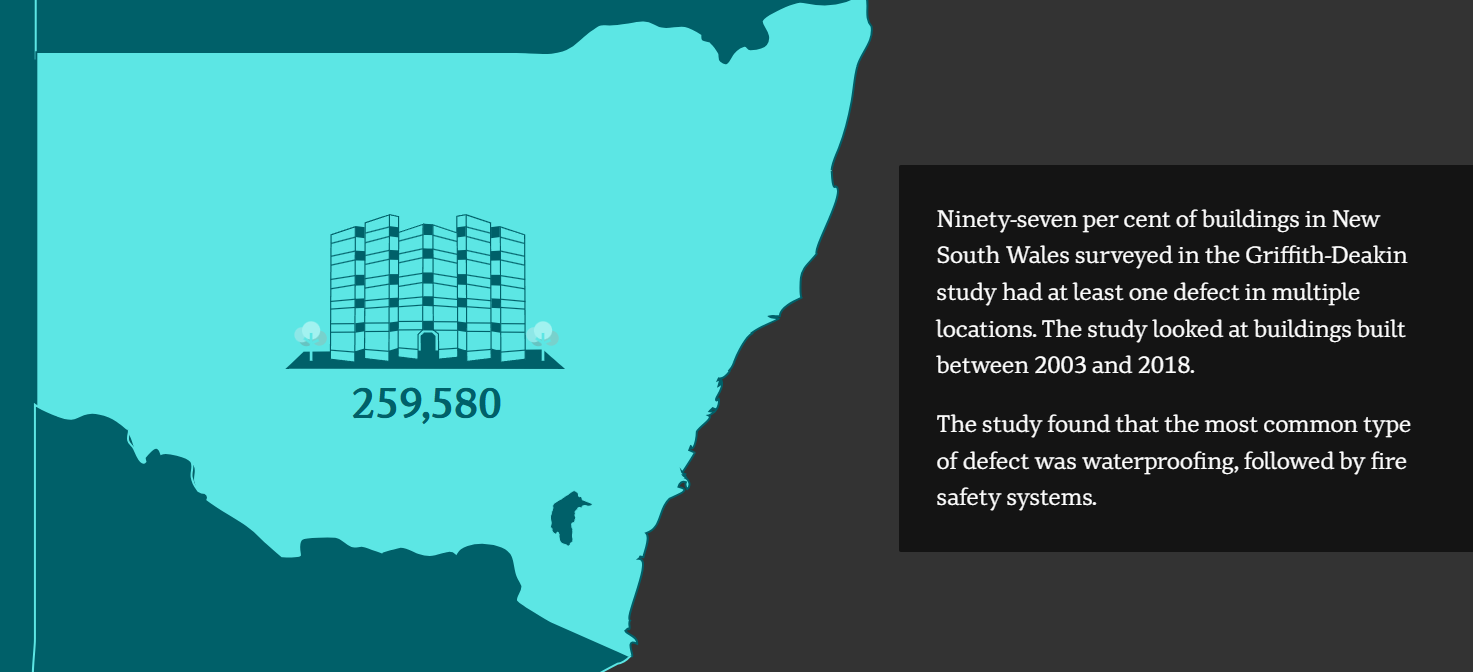What to look for in your first or next investment property – Part 1/2
.jpg)
Buying an investment property as part of a diversified portfolio is – and likely will remain – one of the best ways for most Australians to build wealth.
In my view, owning a rental offers several powerful advantages including:
- The ability to generate significant equity through leverage
- Lower or negative correlation to equity markets
- A generally defensive and growing income stream
I discussed these to a greater extent in my previous property wire below.
.jpg)
Even as Donald Trump rattles share and bond markets, Adelaide’s median house price quietly hit $1 million in March (Domain), while national dwelling prices edged up 0.7% to $820,331 (CoreLogic). Trump can disrupt global trade - but he can’t break the laws of supply and demand that keep pushing property prices higher.
But just like investing in shares, it’s not as simple as buying anything. You need to plan wisely and manage risks to ensure you stick with your investment through thick and thin.
In this two-part series, I’ll share some of the principles I’ve learned from long-term property ownership so you can start (or continue) your property journey with confidence - or decide not to buy at all if it’s not right for you.
principle 1 – treat property like marriage
Many investors who don’t “make it” in property fail because they don’t give it the level of commitment it demands.
I won’t sugarcoat it — property is hard work. You need to be both mentally and financially prepared for the ups and downs.
Anyone selling you the dream of building a sprawling portfolio, collecting magical amounts of passive rent while you sip cocktails in Bali, is kidding themselves (and you).
As the owner, you are ultimately responsible for:
- Managing the profit and loss of the property
- Approving quotes for repairs and renovations
- Making tough calls about evicting tenants
- Staying on top of bills, insurance, and compliance
Even with a property manager, you’re the responsible decision maker. At best, it’s semi-active, and only if you’re lucky enough to have great tenants, like a tradie who takes care of minor repairs because you’ve built a good relationship with them.
There will be periods of stress, and there will be stretches of price appreciation that can change your financial future.
Take one of my uncles as an example. Back in 2001, he bought two units in West Ryde, NSW, for about $150,000 each. Over the next decade, those prices barely budged.
When then-RBA Governor Glenn Stevens hiked the cash rate to 7.25% in 2008, the surging mortgage payments scared him, so my uncle sold the units for the same price he paid.
The thing is, my uncle and his wife did have the means to hold on, they just felt like high interest rates and flat property prices would continue in perpetuity.
Today, those same units are worth around $550,000 each, generating $600 per week in rent. All they needed to do was hold on.

Tips for sustainable property ownership
I often apply Warren Buffett’s wisdom to property because the underlying principle is the same:
“If you aren’t willing to hold a stock for 10 years, don’t even think about holding it for 10 minutes.”
It's important to ask yourself marriage-like questions including:
- Are you prepared for the shock repair bill from time-to-time?
- If your property runs at a $10-20k loss for a period of time, can you handle the heat?
- What happens if prices don't grow for several years? Will you throw in the towel?
- Are you willing to reinvest your earnings back into the property to maintain and improve it?
Golden Rule: The “fortress balance sheet” strategy
I once had a great chat with a banker at a Sydney conference who owned a portfolio of properties. He told me he likes to apply a risk-management strategy from the banking world dubbed the “fortress balance sheet.”
The idea is simple: banks hold 10-15% of their balance sheet as liquidity to withstand severe economic shocks. Property investors should do the same.
For example, if you own a $700,000 property, aim to build up or keep $70,000–$100,000 in cash or your offset account. You’ll need it during the rough years for the things insurance won’t cover.
PRINCIPLE 2 – Location, location, location
I know, I know, you've heard it before: location, location, location. But do you really understand it?
Too often, I see investors oversimplifying this mantra - thinking the only path to success is snapping up a property in a “core middle ring suburb.” While those areas can be solid, it’s not the golden rule many make it out to be.
The reality is: property markets are driven by supply and demand colliding with limited land. As affordability pressures rise in established suburbs, people are inevitably pushed outwards into fringe areas.
What starts as a cheaper, less desirable suburb can morph into a vibrant community as demographics shift and infrastructure catches up.
Look at Sydney. Once upon a time, Penrith, Parramatta, and even the Inner West weren’t exactly hot property. Now? They’re thriving hubs being connected by the metro.
In fact, affordability shocks, like Sydney’s median house price hitting $1.47 million, often trigger ripple effects.
Even high-income earners, fed up with million-dollar mortgages, start moving interstate or to satellite cities. We’ve seen it in places like Newcastle, Wollongong, and the Gold Coast, which have seen double-digit price growth as out-of-state buyers search for value.
But there's a catch(ment)
Just because a suburb is growing in population doesn’t guarantee house price growth, or strong growth. There are intangible factors that drive prices of some areas more than others.
Take the NSW suburbs of Winston Hills and Epping. In the early 2000s, prices were similar in both places (~$500,000 for detached homes on 650 sqm blocks). Now:
- Winston Hills houses sell for about $1.65 million
- Epping houses sell for over $2.6 million
This is despite, in my opinion, Winston Hills being a far better place to live with arguably better connectivity. Yet here we are with Epping commanding a near-$1 million premium. Why?
Two words my friends: school catchments.
Parents will go to extraordinary lengths to secure a place for their children in schools with a strong reputation. Epping offers proximity to Carlingford High and Cheltenham Girls, and future optionality for them to attend the nearby Macquarie University. I know countless parents who fought and won bidding wars because of this.

Key tips for finding the right location
Start with the basics including population growth trends; planned infrastructure (new transport links, hospitals, retail hubs), and employment opportunities nearby (tech parks, industrial zones, universities).
Hunt for suburbs with gentrification potential — think of areas where young professionals, creatives, or families are starting to move in (or will be forced to at some point). Even if it’s a rougher area today, that doesn’t mean you’ll get rough tenants.
Just like CBA trades at a premium to other banks, some suburbs command a premium due to hard-to-replicate factors like top-tier school catchments, proximity to beaches and vibrant dining or cultural precincts.

PRINCIPLE 3 – choose your property carefully
The type of property you buy is just as important as where you buy. Personally, I’m a huge fan of detached houses. Why? They offer the greatest appreciation potential, maximum control, and the lowest amount of risk over the long term.
Here’s how I’d rank property types:
Rank #1 - Detached houses on decent blocks (ideally 500 sqm+):
These are the gold standard. You have control to renovate, subdivide, add a granny flat, or even rebuild entirely - without the red tape that comes with strata properties.
The land component drives most of the long-term value and makes houses very precious.
Rank #2 - Townhouses (ideally 3 bed, 2 bath)
A decent middle-ground option, especially in land-constrained areas.
But they come with body corporate fees and limited ability to add value (no subdividing, no adding granny flats and restrictions on renovations).
I bought one myself in 2012 and it’s done fine. But I sometimes kick myself that I didn’t stretch a little further for a detached house. The capital gains could have been 30% higher, and I could’ve added another income stream with a granny flat.
Rank #3 - Units (ideally 2 bad, 2 bath)
The entry point for many investors due to affordability.
But be cautious - units typically offer the lowest capital growth and the highest risk (hello, defect-plagued new builds!).
If you must buy a unit, consider older, boutique blocks. These tend to be better built, with fewer neighbors sharing the costs of maintenance.

What to prioritise?
Aim for at least 3 bedrooms and 2 bathrooms (houses I'm more forgiving on because its the land that is precious.
This setup appeals to families, who often make the most stable long-term tenants and offer better resale value. Most families balk at the idea of 1 bathroom for three or four people - it limits your tenant pool and future buyers.
For units/townhouses, avoid the shiny new stuff. I won’t go too deep into this, but Google “Sydney apartment defects” and you’ll see why I prefer older stock. Today’s builds often sacrifice quality for cost-cutting - thin walls, small spaces, and poorly managed strata schemes.
wrapping up - Is property right for you?
Before we wrap up part 1, I want to stress: property isn’t for everyone.
And depending on whose numbers you believe, it may not even be the best way to build wealth, especially if you think the world runs on "average returns" (i.e., if you really believe all properties return ~6% p.a., while equities return 8–11% p.a.).
Financial adviser Sebastian Ferrando and value investor Chris Leithner make strong points against property. For some investors, especially those who prefer less hassle, a diversified share portfolio might be the better option.
The key is knowing yourself and what you’re willing to commit to, both financially and emotionally.
Stay tuned for part 2, where I’ll unpack the financials, strata reports, and negotiation tactics that can make or break a property deal.



1 topic
2 contributors mentioned
